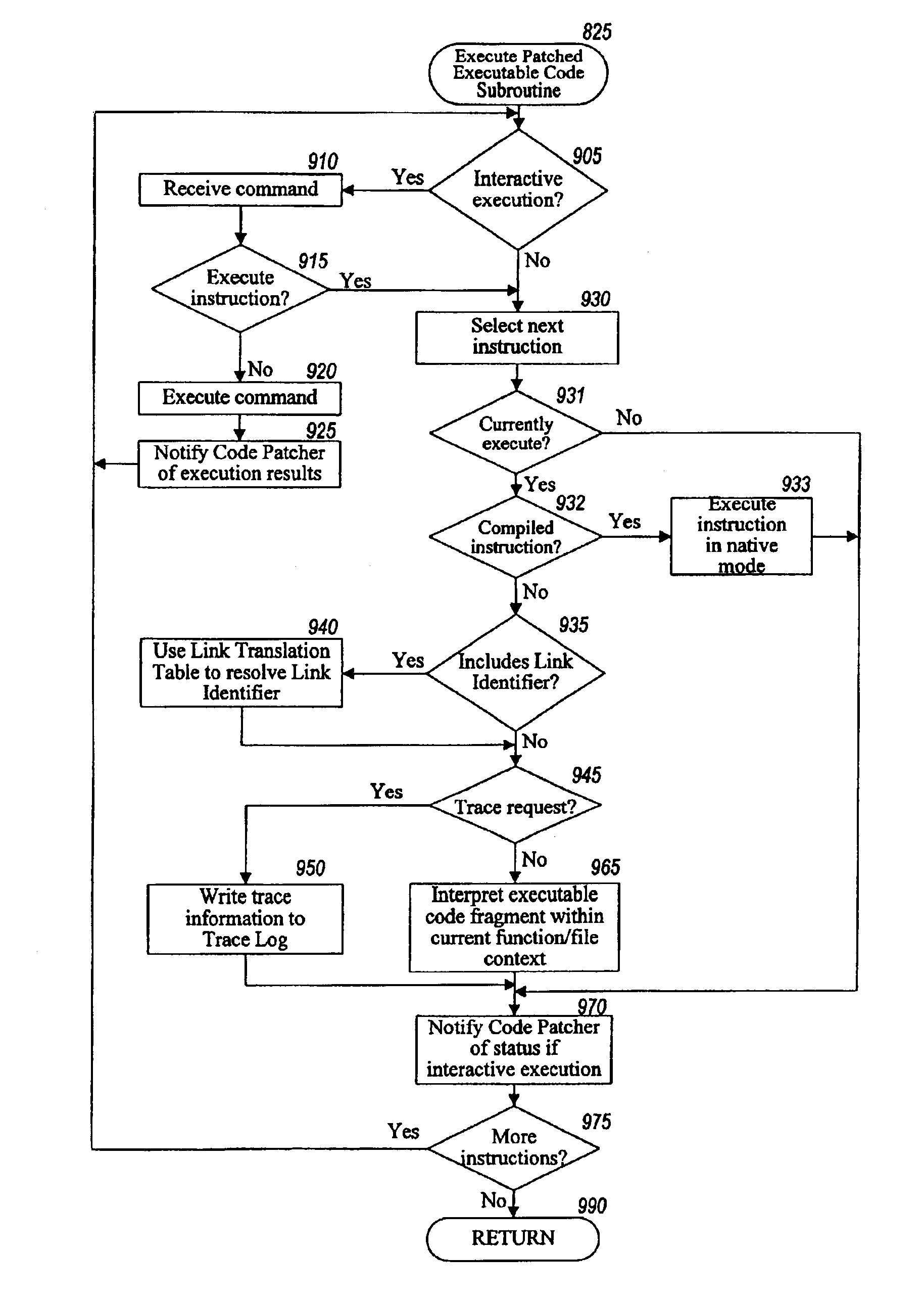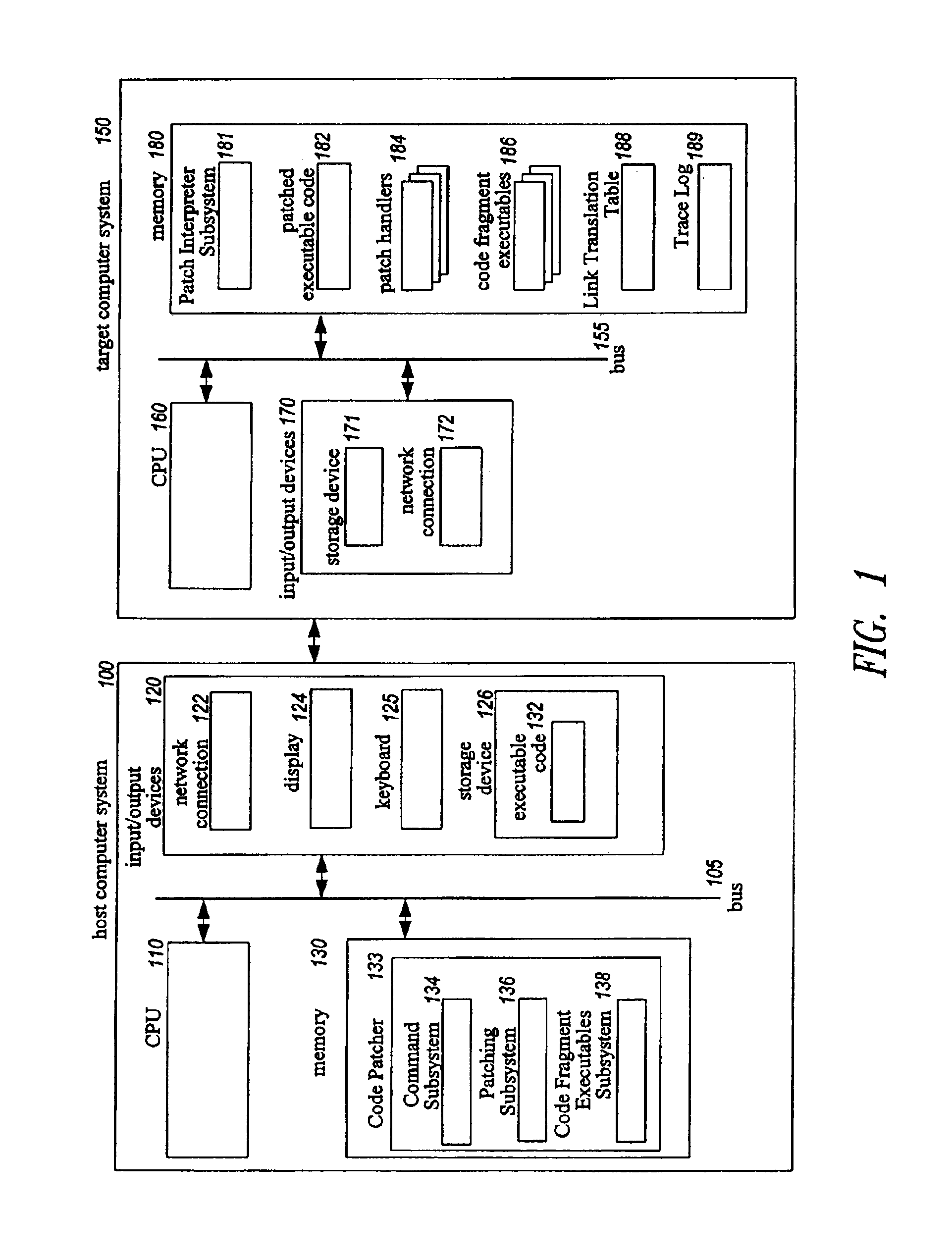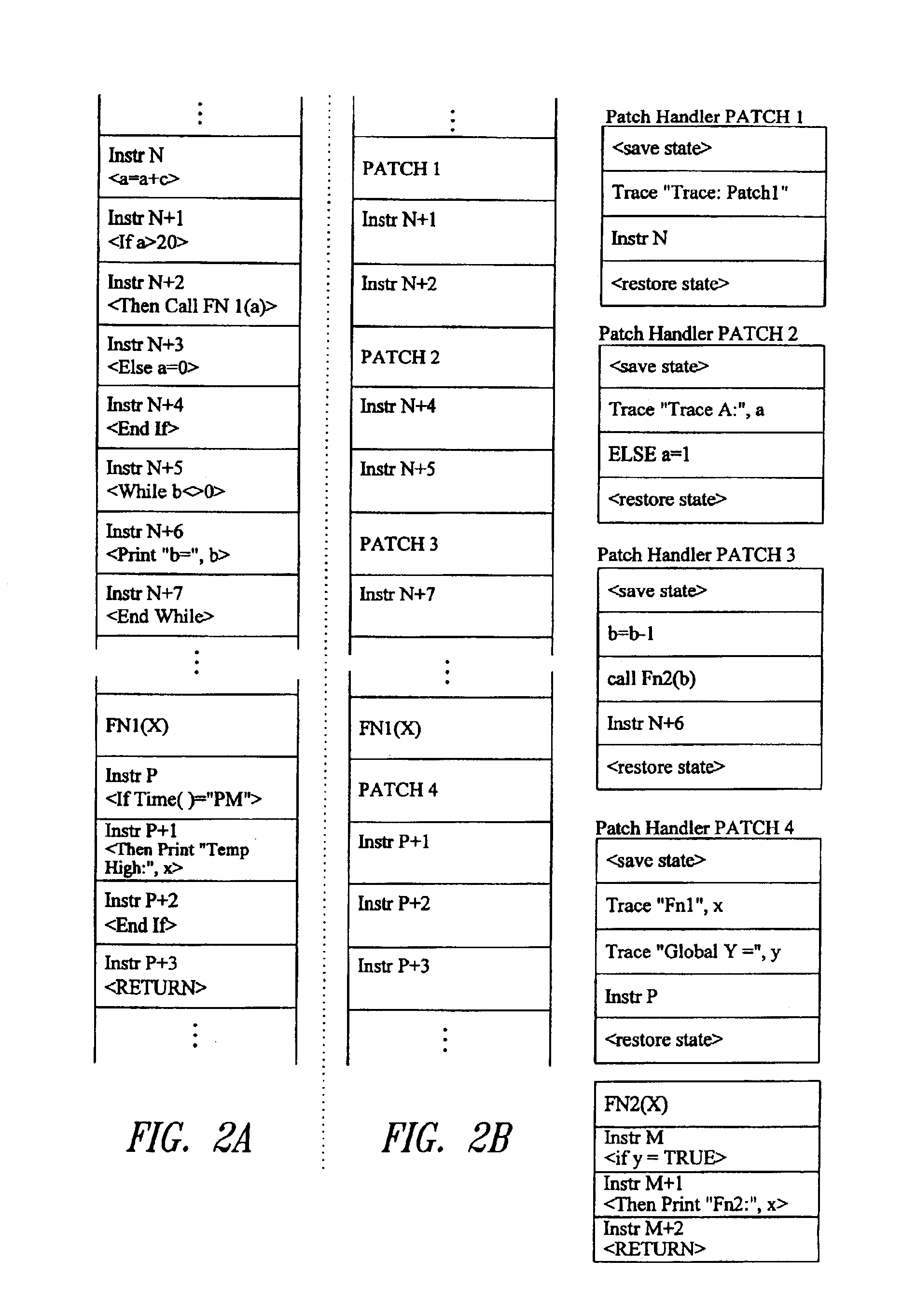Method and system for modifying executable code to add additional functionality
a technology of modifying executable code and adding additional functionality, applied in the direction of software deployment, program control, instruments, etc., can solve the problems of time-consuming and laborious creation of executable software code, program logic error, and technique not typically useful in modifying errors in compiled code, and achieve significant time saving
- Summary
- Abstract
- Description
- Claims
- Application Information
AI Technical Summary
Benefits of technology
Problems solved by technology
Method used
Image
Examples
Embodiment Construction
[0020]An embodiment of the present invention provides a method and system for modifying a compiled executable code file so as to add functionality when the modified executable code file is executed. The modifying of the executable code file is performed without recompiling, relinking or rewriting the executable code file. In particular, the Code Patcher system loads compiled executable code into memory on a target computer, and allows a user to indicate patches to be made to the compiled executable file. These patches can include adding code statements (i.e., compiled instructions or lines of source code) to the compiled executable file. In one embodiment, the source code lines corresponding to the compiled executable instructions in the file can be shown, and the user can indicate the changes to be made in the displayed source code. After the patches have been indicated, the Code Patcher system modifies the compiled executable code in a non-transitory manner such that the patches w...
PUM
 Login to View More
Login to View More Abstract
Description
Claims
Application Information
 Login to View More
Login to View More - R&D
- Intellectual Property
- Life Sciences
- Materials
- Tech Scout
- Unparalleled Data Quality
- Higher Quality Content
- 60% Fewer Hallucinations
Browse by: Latest US Patents, China's latest patents, Technical Efficacy Thesaurus, Application Domain, Technology Topic, Popular Technical Reports.
© 2025 PatSnap. All rights reserved.Legal|Privacy policy|Modern Slavery Act Transparency Statement|Sitemap|About US| Contact US: help@patsnap.com



